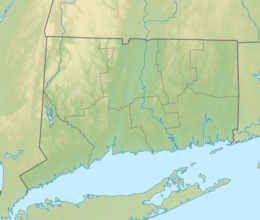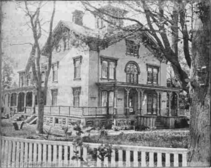
French Island is the largest coastal island of Victoria, Australia, located in Western Port, 61 km (38 mi) southeast of Melbourne. In 1997, about 70% of the island was declared the French Island National Park, administered by Parks Victoria, and was listed in the former Register of the National Estate in 1984. The island is an unincorporated area under the direct administration of the government of Victoria, and is a declared locality of Victoria having its own postcode. Community issues are dealt by the French Island Community Association. The island is otherwise administered by the Department of Transport and Planning. The population of the island in 2011 was around 116 people, of which about 60 were permanent residents. By 2021 the population on census night was recorded as 139 with a median age of 52 years.

Redding is a town in Fairfield County, Connecticut, United States. The population was 8,765 at the 2020 census. The town is part of the Western Connecticut Planning Region.

Montville is a town in New London County, Connecticut in the United States. The town is part of the Southeastern Connecticut Planning Region. The population was 18,387 at the 2020 census.

Norwalk is a city located in Western Connecticut, United States, in southern Fairfield County, on the northern shore of the Long Island Sound. Norwalk lies within both the New York metropolitan area and the Bridgeport metropolitan area.
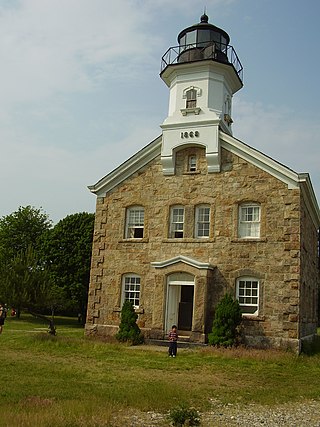
Sheffield Island Light is a historic lighthouse located at the southern end of the Norwalk Islands in Norwalk, Connecticut. It marks the west side of the mouth of the Norwalk River on northern Long Island Sound.

Manresa is the capital of Bages county, located in the central region of Catalonia, Spain.

Chambers Island, named in honor of Col. Talbot Chambers, is a 2,834 acre island in Green Bay, about 7 miles (11 km) off the coast of the Door Peninsula, near Gibraltar, Wisconsin. It is part of the Town of Gibraltar in Door County.

NRG Energy, Inc. is an American energy company, headquartered in Houston, Texas. It was formerly the wholesale arm of Northern States Power Company (NSP), which became Xcel Energy, but became independent in 2000. NRG Energy is involved in energy generation and retail electricity. Their portfolio includes natural gas generation, coal generation, oil generation, nuclear generation, wind generation, utility-scale generation, and distributed solar generation. NRG serves over 7 million retail customers in 24 US states including Texas, Connecticut, Delaware, Illinois, Maryland, Massachusetts, New Jersey, New York, Pennsylvania, Ohio; the District of Columbia, and eight provinces in Canada.
The Stewart B. McKinney National Wildlife Refuge is a 950-acre (384.5 ha) National Wildlife Refuge in ten units across the U.S. state of Connecticut. Located in the Atlantic Flyway, the refuge spans 70 miles (110 km) of Connecticut coastline and provides important resting, feeding, and nesting habitat for many species of wading birds, shorebirds, songbirds and terns, including the endangered roseate tern. Adjacent waters serve as wintering habitat for brant, scoters, American black duck, and other waterfowl. Overall, the refuge encompasses over 900 acres (364.2 ha) of barrier beach, intertidal wetland and fragile island habitats.

The history of Norwalk, Connecticut ranges from pre-contact cultures and Native Americans to the 21st century.
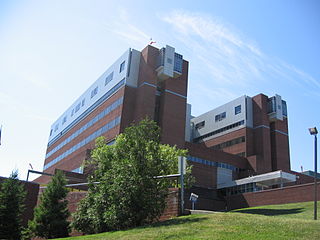
Norwalk Hospital is a not-for-profit, acute care community teaching hospital in the Hospital Hill section of Norwalk, Connecticut. The hospital serves a population of 250,000 in lower Fairfield County, Connecticut. The 366-bed hospital has more than 500 physicians on its active medical staff, and 2,000 health professionals and support personnel. The hospital was part of the Western Connecticut Health Network, which included two other hospitals - Danbury Hospital and New Milford Hospital - up until April 2019, when WCHN merged with Health Quest to form Nuvance Health.

The Norwalk Islands are a chain of more than 25 islands amid partly submerged boulders, reefs and mudflats along a six-mile (10 km) stretch and mostly about a mile off the coast of Norwalk, Connecticut, and southwest Westport, Connecticut, in Long Island Sound.

Spring Hill is a section of Norwalk, Connecticut named after the hill on which most of the neighborhood sits. The neighborhood is located west of the Central section of Norwalk, across U.S. Route 7 and north of Interstate 95 and U.S. Route 1. Norwalk Hospital is on the eastern edge of the neighborhood. Riverside Cemetery is on the northeastern edge.

Alma is a ghost town and drowned town in Santa Clara County in California, United States. It lies beneath the waters of the Lexington Reservoir above Los Gatos. The location is latitude 37.18N and longitude 121.98W. It was 551 feet above sea level.
Norwalk Harbor is a recreational and commercial harbor and seaport at the estuary of the Norwalk River where it flows into Long Island Sound in Norwalk, Connecticut, United States.
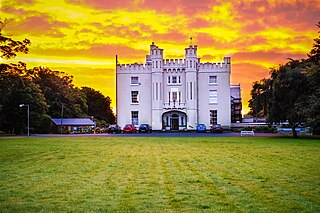
Manresa House is a retreat centre run by the Society of Jesus in the Dollymount area of Clontarf in Dublin, near Saint Anne's Park. In the 19th century it was home to Robert Warren and Arthur Guinness, and it is a protected structure.

Inisfada was the North Hills, Long Island estate of Nicholas Frederic Brady and Genevieve Brady, an American papal duke and duchess. Nicholas Brady was a convert from Episcopalianism to Catholicism and built the mansion as his family residence. Completed in 1920, the home was later given to the Jesuits. They used the building as a seminary and later as the St. Ignatius Retreat House. The property was sold in May 2013 to developers, and the house was demolished in December 2013.

Parkstead House, formerly known as Manresa House and Bessborough House, is a neo-classical Palladian villa in Roehampton, London, built in the 1760s. The house and remaining grounds are now Whitelands College, part of the University of Roehampton. It is situated on Holybourne Avenue, off Roehampton Lane, next to the Richmond Park Golf Course in the London Borough of Wandsworth. In 1955 it was designated Grade I on the National Heritage List for England.
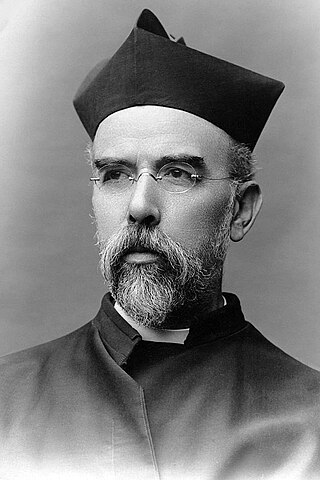
Joseph J. Himmel was an American Catholic priest and Jesuit. For much of his early life, he was a missionary throughout the northeast United States and retreat master. Later in life, he was president of Gonzaga College and Georgetown University in Washington, D.C.

Thomas Ignatius Gasson was an American Catholic priest and Jesuit. Born in England, he emigrated to the United States at the age of 13, and was taken under the care of two Catholic women in Philadelphia, which led to his conversion to Catholicism soon thereafter. He entered the Society of Jesus in 1875, and studied theology at the University of Innsbruck in Austria, where he was ordained a priest. Upon his return to the United States, he became a professor at Boston College, before being named President of Boston College in 1907.
